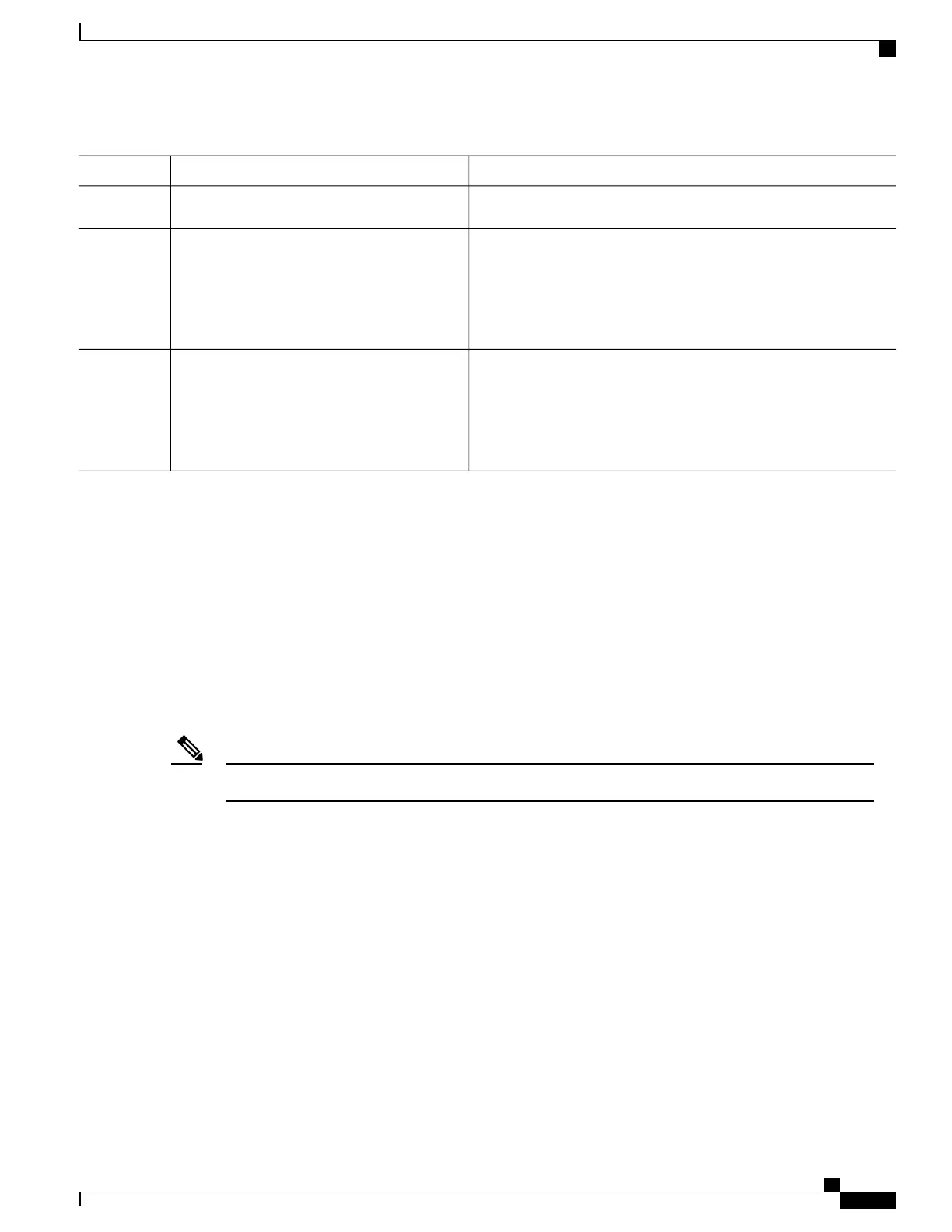PurposeCommand or Action
Traffic Filtering Actions, on page 209 provides conceptual information
on these extended community actions.
Returns the router to policy map configuration mode.exit
Example:
RP/0/RSP0/CPU0:router(config-pmap-c)#
Step 6
exit
Ends the policy map configuration and returns the router to global
configuration mode.
end-policy-map
Example:
RP/0/RSP0/CPU0:router(config-cmap)#
Step 7
end-policy-map
What to Do Next
Perform VRF and flowspec policy mapping for distribution of flowspec rules using the procedure explained
in Link Flowspec to PBR Policies , on page 217
Link Flowspec to PBR Policies
For BGP flowspec, a PBR policy is applied on a per VRF basis, and this policy is applied on all the interfaces
that are part of the VRF. If you have already configured a PBR policy on an interface, it will not be overwritten
by the BGP flowspec policy. If you remove the policy from an interface, PBR infrastructure will automatically
apply BGP flowspec policy on it, if one was active at the VRF level.
At a time only one PBR policy can be active on an interface.Note
SUMMARY STEPS
1.
configure
2.
flowspec
3.
local-install interface-all
4.
address-family ipv4
5.
local-install interface-all
6.
service-policy type pbr policy-name
7.
commit
8.
exit
9.
show flowspec { afi-all | client | ipv4 | summary | vrf
Cisco ASR 9000 Series Aggregation Services Router Routing Configuration Guide, Release 5.3.x
217
Implementing BGP Flowspec
How to Configure BGP Flowspec

